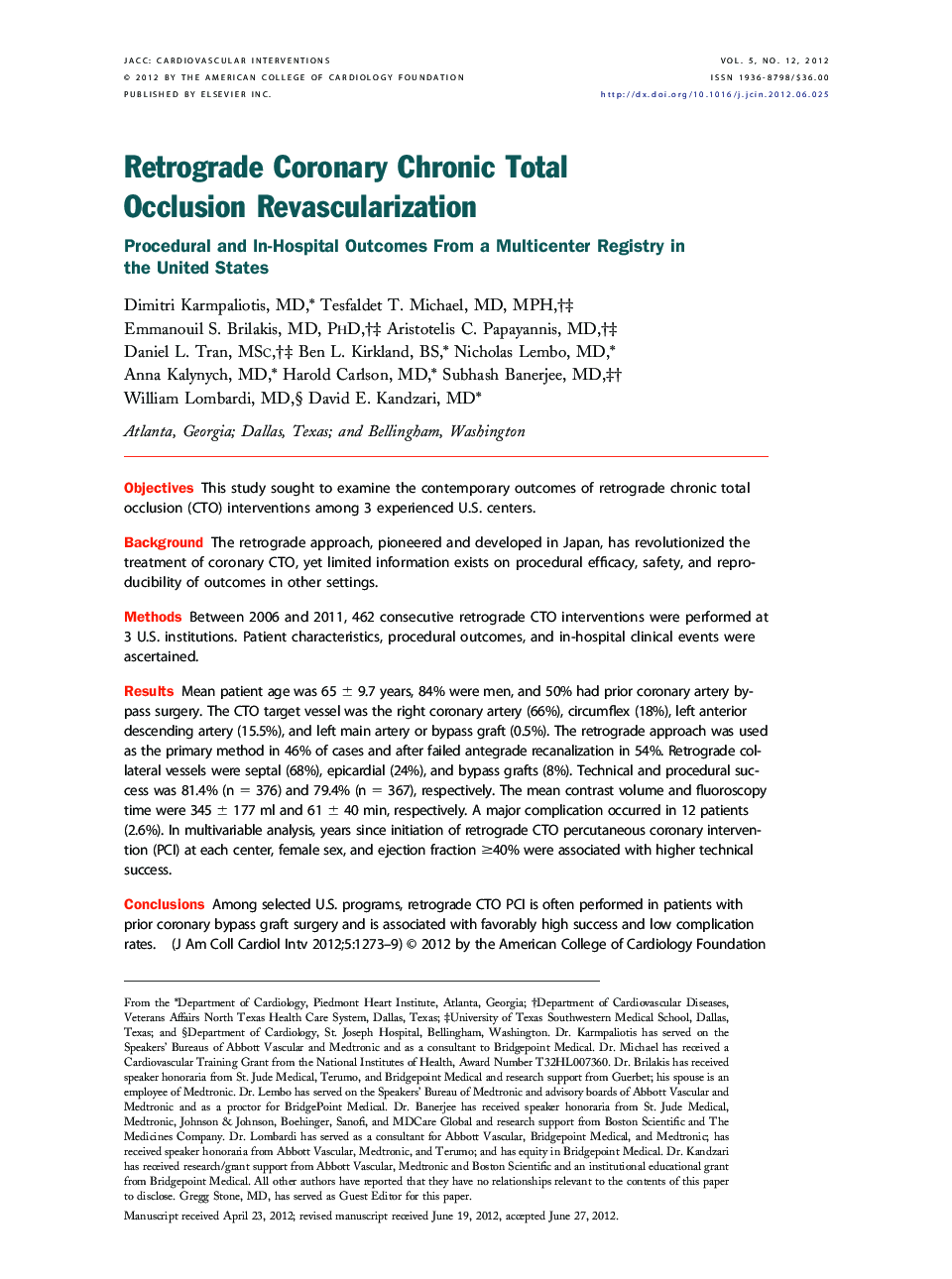| Article ID | Journal | Published Year | Pages | File Type |
|---|---|---|---|---|
| 2940774 | JACC: Cardiovascular Interventions | 2012 | 7 Pages |
ObjectivesThis study sought to examine the contemporary outcomes of retrograde chronic total occlusion (CTO) interventions among 3 experienced U.S. centers.BackgroundThe retrograde approach, pioneered and developed in Japan, has revolutionized the treatment of coronary CTO, yet limited information exists on procedural efficacy, safety, and reproducibility of outcomes in other settings.MethodsBetween 2006 and 2011, 462 consecutive retrograde CTO interventions were performed at 3 U.S. institutions. Patient characteristics, procedural outcomes, and in-hospital clinical events were ascertained.ResultsMean patient age was 65 ± 9.7 years, 84% were men, and 50% had prior coronary artery bypass surgery. The CTO target vessel was the right coronary artery (66%), circumflex (18%), left anterior descending artery (15.5%), and left main artery or bypass graft (0.5%). The retrograde approach was used as the primary method in 46% of cases and after failed antegrade recanalization in 54%. Retrograde collateral vessels were septal (68%), epicardial (24%), and bypass grafts (8%). Technical and procedural success was 81.4% (n = 376) and 79.4% (n = 367), respectively. The mean contrast volume and fluoroscopy time were 345 ± 177 ml and 61 ± 40 min, respectively. A major complication occurred in 12 patients (2.6%). In multivariable analysis, years since initiation of retrograde CTO percutaneous coronary intervention (PCI) at each center, female sex, and ejection fraction ≥40% were associated with higher technical success.ConclusionsAmong selected U.S. programs, retrograde CTO PCI is often performed in patients with prior coronary bypass graft surgery and is associated with favorably high success and low complication rates.
